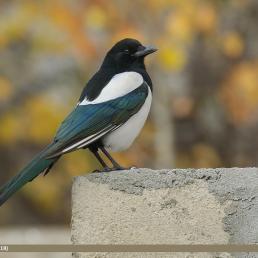

Join BirdNote tomorrow, November 30th!
Illustrator David Sibley and actor H. Jon Benjamin will face off in the bird illustration battle of the century during BirdNote's Year-end Celebration and Auction!
Desert raptors get most of their water from eating prey animals. Biologist Blair Wolf explains, “if you think of any insect or a mouse or something like that, they’re maybe 75% water.” Those animals become less plentiful in a hotter, drier climate. Extreme warming poses a direct danger to the raptors (such as this Harris's Hawk) and leads to lower rates of reproduction. Lacking sufficient water, they may not be able to produce eggs, and there must be enough food for their nestlings to thrive.
BirdNote®
Raptors in the Mojave Desert
By Sonja Swanson
This is BirdNote.
It’s a sunny September morning at Red Rock Canyon in the Mojave Desert. I spot hummingbirds, flycatchers, and a family of Gambel’s Quail. But what I’m really after are birds of prey, and I don’t see any. As it turns out, desert raptors are being hit extra hard by climate change.
Blair Wolf: So desert species have a special set of challenges—we’re really getting extreme warming in the Southwest.
Blair Wolf is a biologist at the University of New Mexico. He says that hotter and drier deserts mean less water, leading to fewer plants and therefore less prey.
Blair Wolf: And that leads to a general, more difficult problem for raptors to find food necessary for both energy and water—raptors get most of their water from the food they eat. If you think of any insect or a mouse or something like that, they’re maybe 75% water.
Which can lead to lower rates of reproduction.
Blair Wolf: Because... they've got to be able to make eggs and then find food for their nestlings.
Heat stress itself, even a few degrees of warming, can be a cause of death for raptors. In recent years, we’ve seen record-breaking temperatures sweeping across the Southwest.
Blair Wolf: When temperatures aren't even dropping below 95 or 100 degrees at night, until three in the morning, you know you've got a problem.
And it’s only getting hotter.
I get back in my car without seeing a single raptor. But on the drive home, there it is: A Turkey Vulture, circling high above the greenest grass around: a water-guzzling golf course. This artificial ecosystem is an accidental oasis for a bird, but it doesn’t solve the long-term problems they’re facing in the desert.
For BirdNote, I’m Sonja Swanson.
###
Senior Producer: John Kessler
Production Manager: Allison Wilson
Associate Producer: Ellen Blackstone
Producer: Mark Bramhill
Editor: Ari Daniel
Producer: Sonja Swanson
Field Recordings by Sonja Swanson
© 2020 BirdNote December 2020/September 2023 Narrator: Sonja Swanson
ID# mojave-01-2020-12-13 mojave-01


